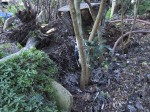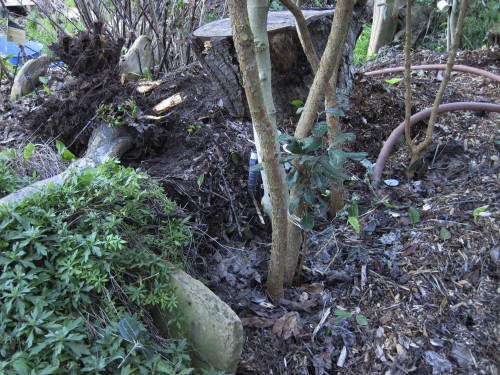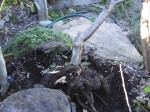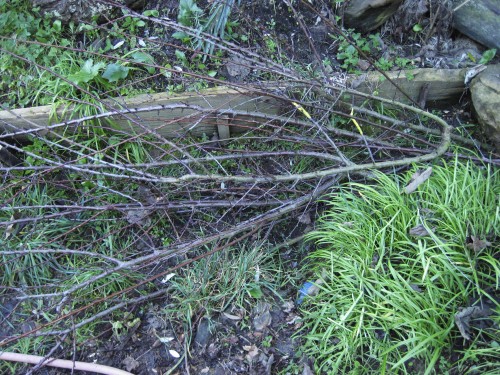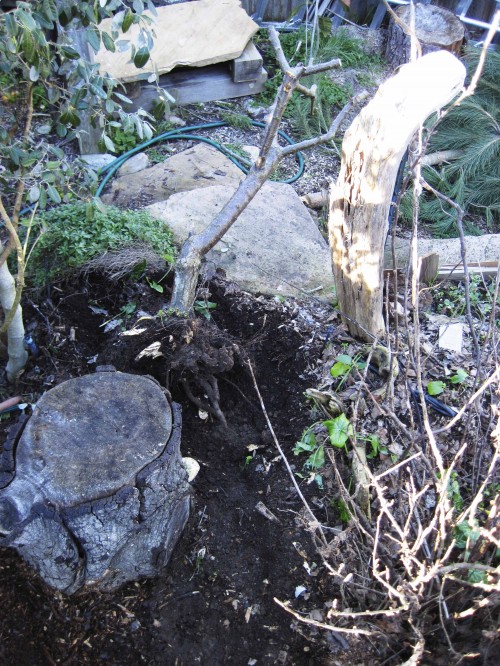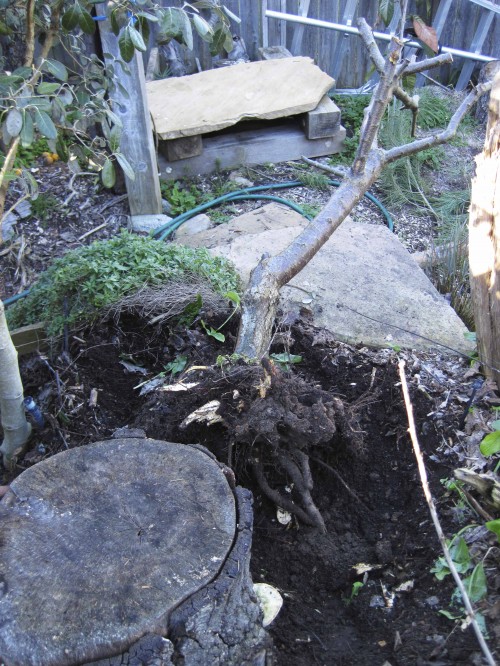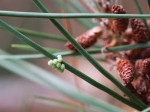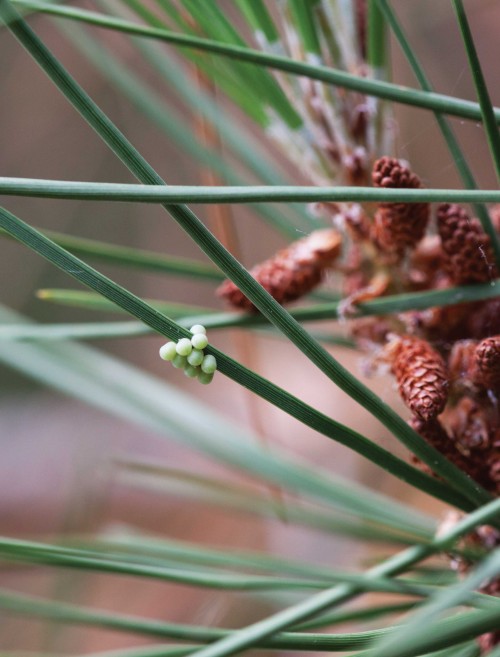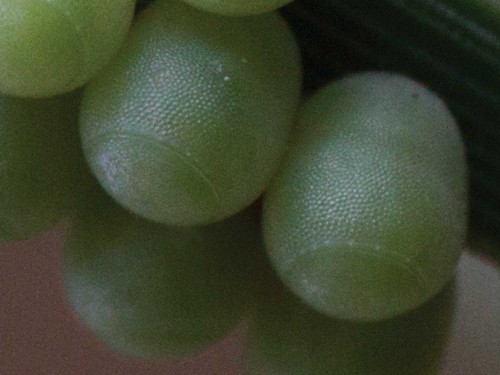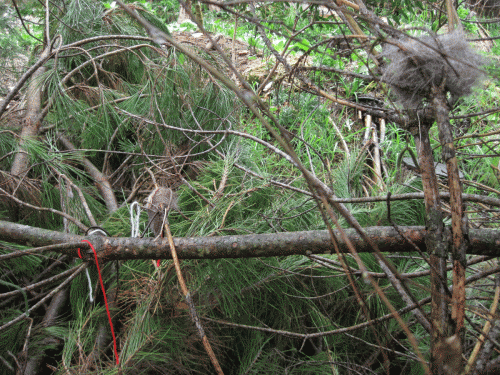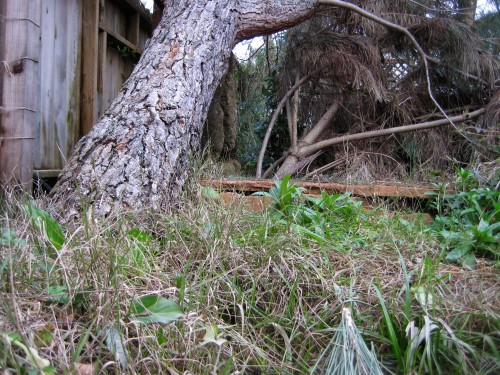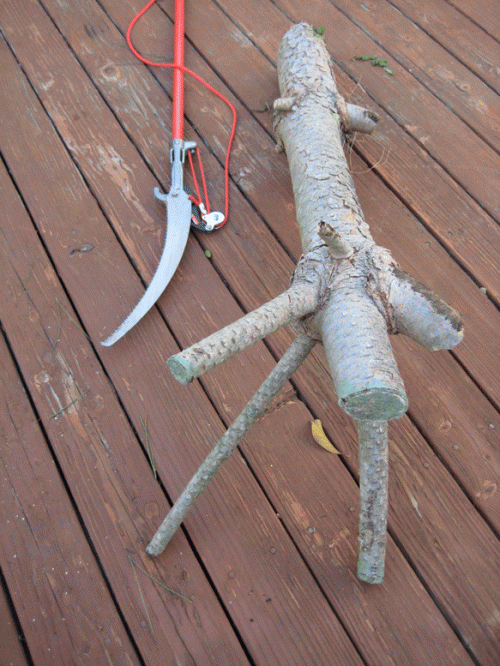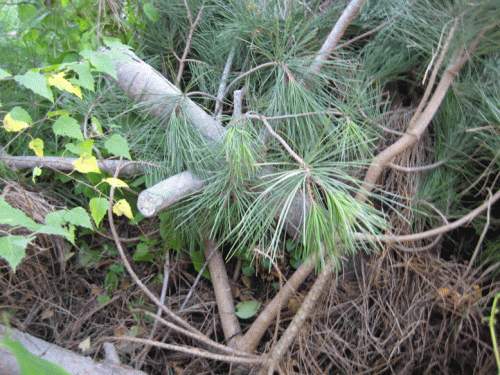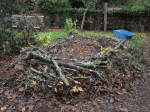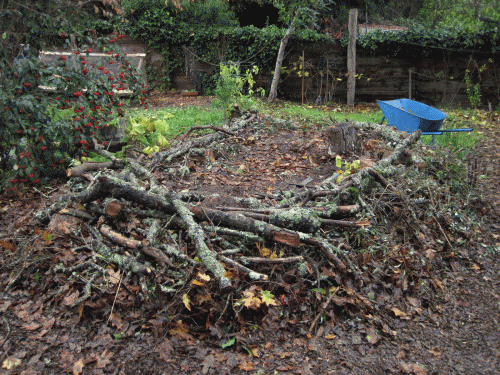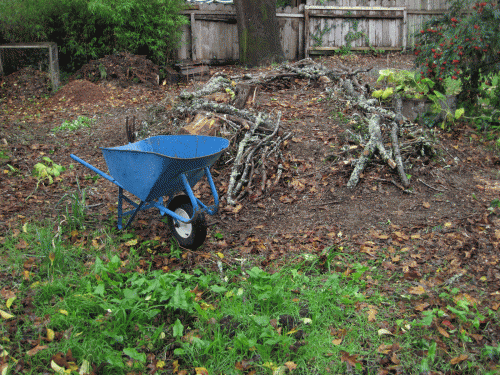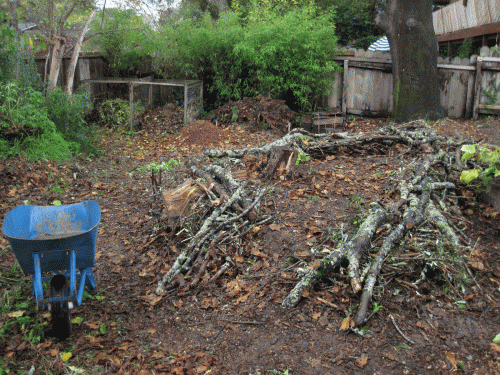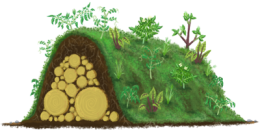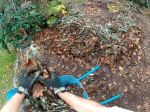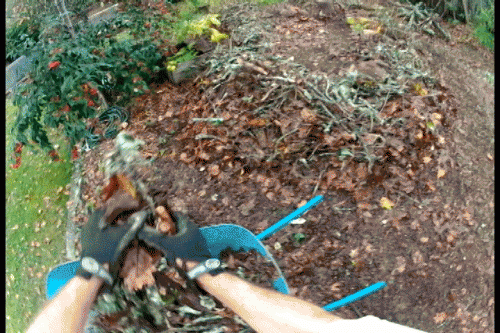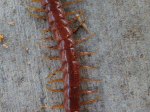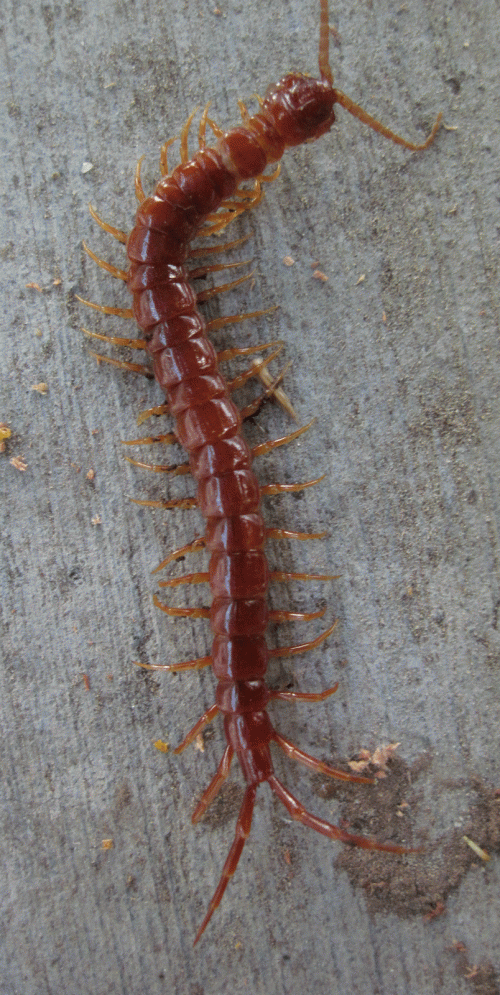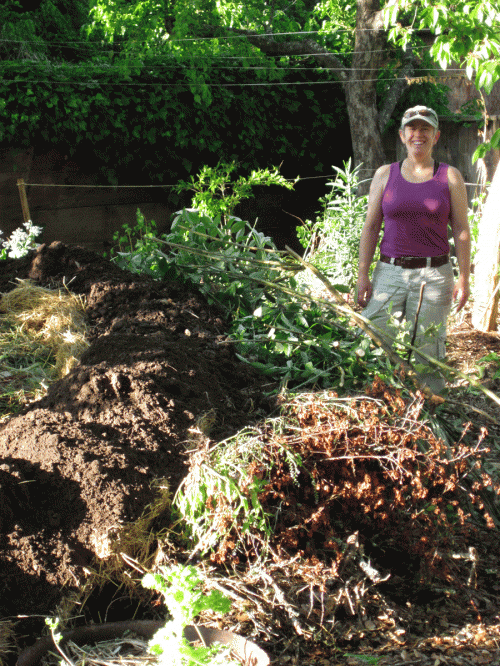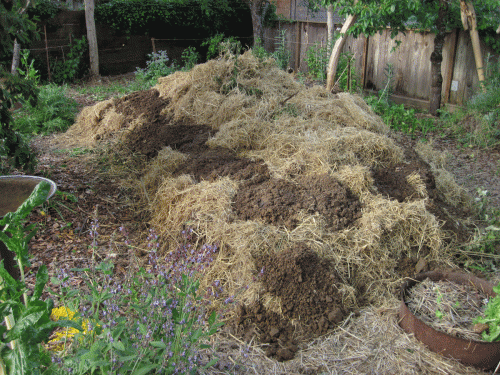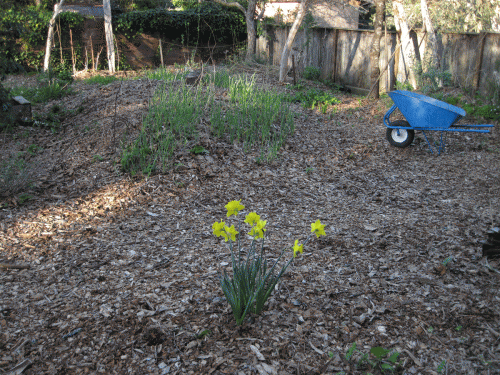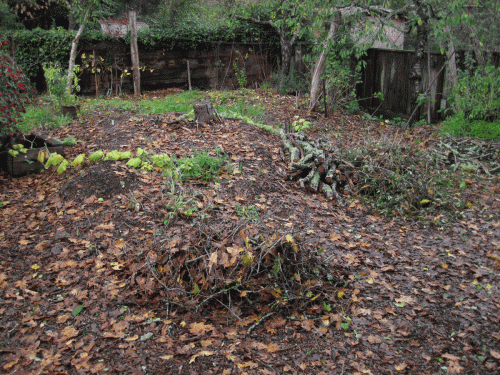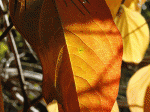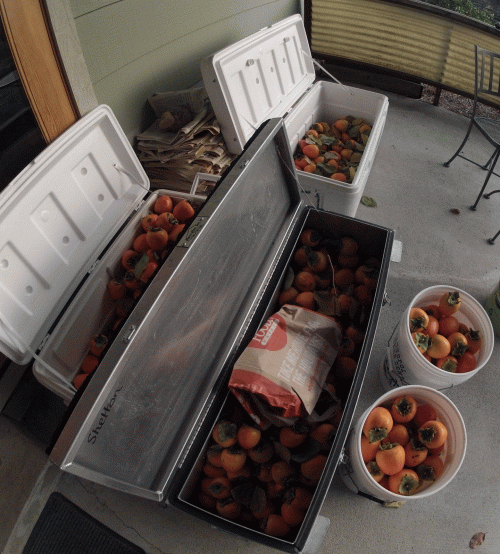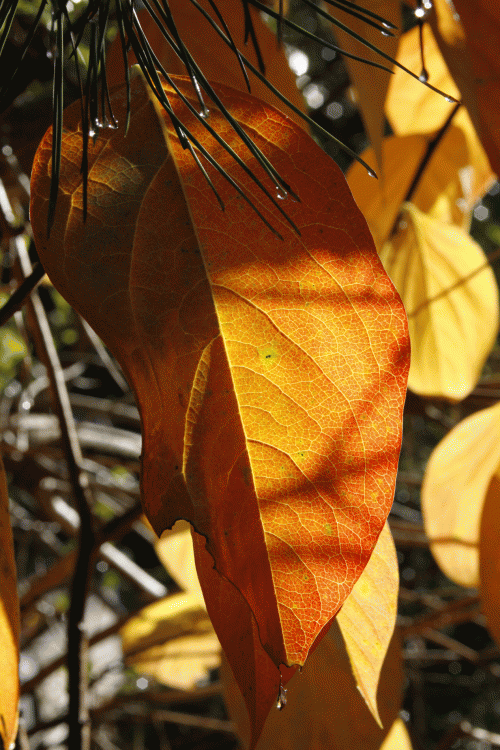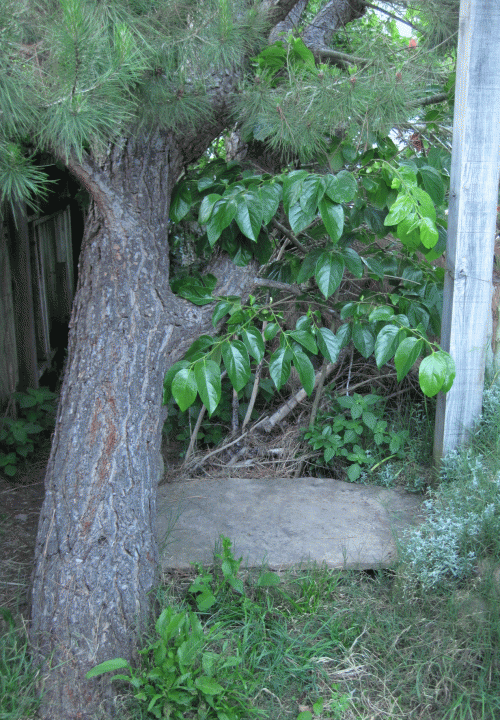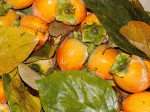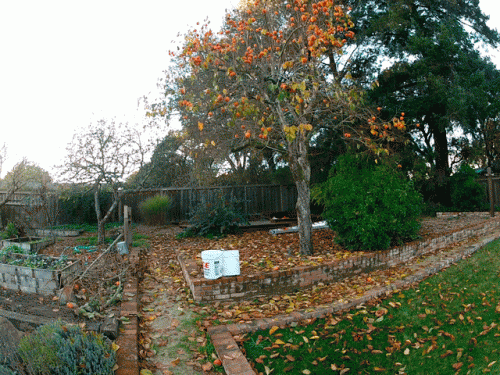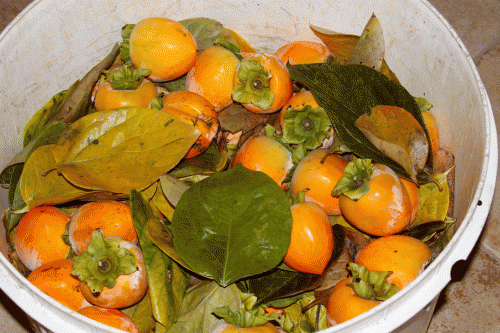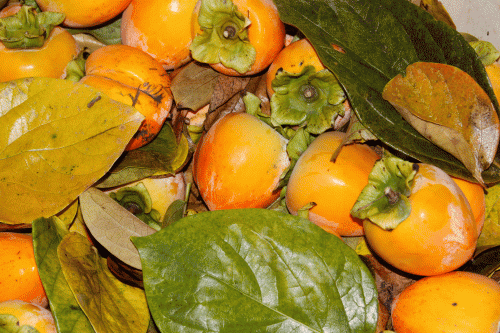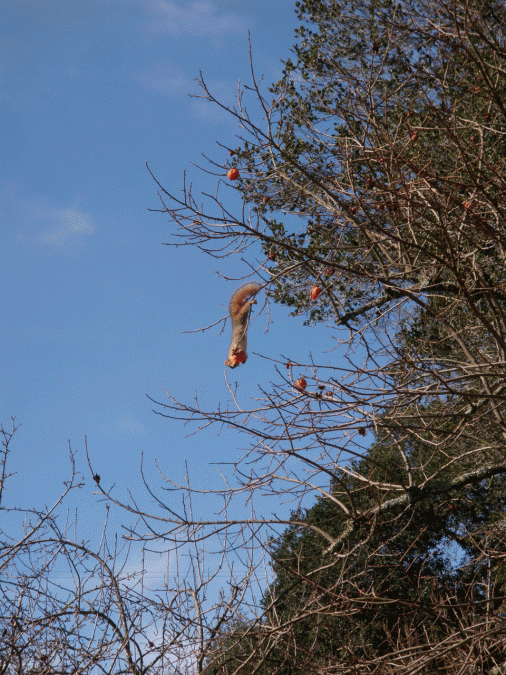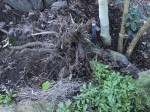
This is the third of three videos showing a garden animal habitat created when our apricot tree was almost entirely uprooted and partially buried on it side. Features of the completed project are explained:
–The up-ended rootball serves as an animal habitat.
–The buried tree trunk acts as a retaining wall for the wood chip path.
–The retaining wall allows a watering trench to be dug into the garden bed slope.
20130130 Grandpa’s Apricot Root Worlds Fair 3 of 3 (video):
20130130 Grandpa’s Apricot Root Worlds Fair (pics):
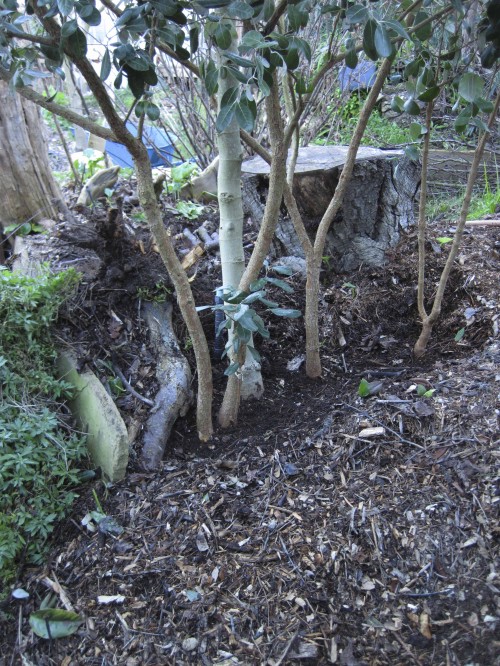 Grandpa’s apricot tree is snug in the ground, upside down between the slate wall and the pineapple guava tree. Note the also up-ended apricot tree rootball, which remains partially buried. Some of the roots may thrive and send life to shoots reaching for the sky (like a tree!).
Grandpa’s apricot tree is snug in the ground, upside down between the slate wall and the pineapple guava tree. Note the also up-ended apricot tree rootball, which remains partially buried. Some of the roots may thrive and send life to shoots reaching for the sky (like a tree!).
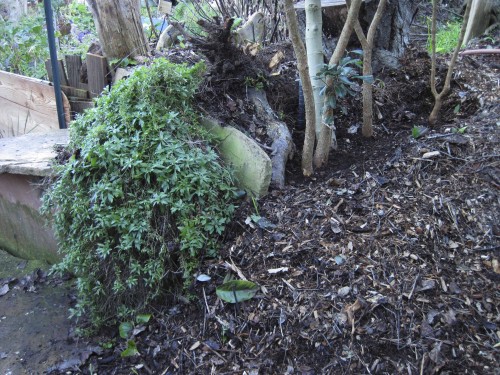 Woodchips are scooped aside to create a watering trench for the garden bed trees. The pineapple guava is tan-colored and the mission fig (thicker, in back) is a pale green. The buried tree trunk serves as retaining wall to the left, allowing a deeper watering trench to be dug.
Woodchips are scooped aside to create a watering trench for the garden bed trees. The pineapple guava is tan-colored and the mission fig (thicker, in back) is a pale green. The buried tree trunk serves as retaining wall to the left, allowing a deeper watering trench to be dug.
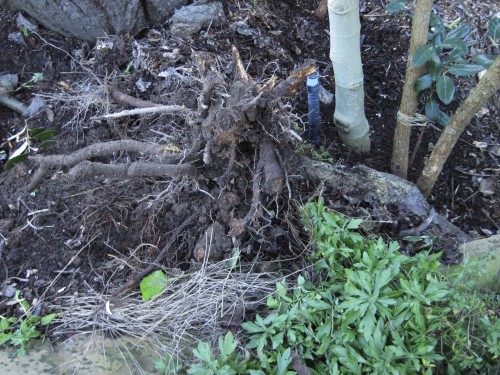 Side view of Grandpa’s Apricot Root Worlds Fair animal habitat. Note the mix of Medusa-like roots and soil in the up-ended rootball. The mass of roots and crown wood will become homes for wood-loving critters. As well, the fingers of soil converging into the root mass will become homes for soil-loving critters. In the end, ALL ARE WELCOME!!!
Side view of Grandpa’s Apricot Root Worlds Fair animal habitat. Note the mix of Medusa-like roots and soil in the up-ended rootball. The mass of roots and crown wood will become homes for wood-loving critters. As well, the fingers of soil converging into the root mass will become homes for soil-loving critters. In the end, ALL ARE WELCOME!!!
Enjoy your habitat upside down creations!
Tony

